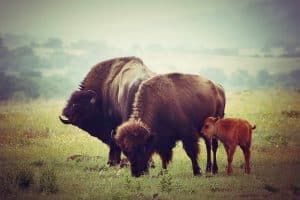Best Grass for West Texas
Best Grass for West Texas – In West Texas, it’s almost all about high temperatures and low rainfall. The stats at currentresults.com tell us that Lajitas, Big Bend Park experiences 10.9 inches of rainfall annually while El Paso only has an average of 9.7 inches each year.
As such, the best grasses for West Texas – for lawns in West Texas – will need to withstand long periods of drought and will have to be durable. Further, these grasses must do well under full sunshine.
Bermuda Grass (Cynodon dactylon)
Also referred to as dog’s tooth grass, couch grass, Bahama grass, Dhoob, dūrvā grass, dubo, devil’s grass, Indian doab, arugampul, grama, wiregrass, and scutch grass.
Among the most common turf grasses in Texas. It’s native to most of the eastern hemisphere. It’s not native to Bermuda, but it does thrive there as an invasive species.
Bermuda grass is a warm-season grass and it does very well in zones that are either tropical or sub-tropical.
Besides being a popular choice of grass for lawns in Texas, Bermuda grass is commonly utilized on sports fields and golf courses. That’s because it is highly durable.
Bermuda is quick-growing. It spreads by way of above-ground and underground stems. The grass is grown from sprigs, sod, and from seed.
As you’d expect, Bermuda will ‘swamp’ other, competing plants in a short timespan.
The leaves are narrow, it has a coarse texture, and it does not do at all well in shady conditions.
It’s drought-tolerant and is capable of withstanding high temperatures.
In areas where there are frosts, Bermuda grass will become dormant.
The amount of maintenance it requires is medium – it does need occasional watering and it will need fairly regular mowing.
Common Bermuda grass is light green in color.
Best Grass for West Texas – Zoysia Grass (Zoysia matrella)
Zoysia is a genus of creeping grasses that is widespread in Australia, Asia, and on many Pacific islands.
Zoysia grass first made its way to the US in 1895, or perhaps before then. This was when lawns started to capture the interest of homeowners in America.
It’s referred to as a warm-season grass. In late spring, when the temperatures begin to rise, zoysia starts to grow. Peak growth occurs in hot summers.
Tolerant to very high temperatures, zoysia grass is well suited to West Texas.
When there’s extreme drought, zoysia is slow to recover, though it generally will, given time.
It comes with an attractive green coloring, and it’s because of the deep root system that it can withstand periods of drought.
Zoysia grass can tolerate shade to some extent though it has a strong preference for full sun.
It makes a dense turf which helps it in choking out crabgrass and weeds within the lawn.
You can mow zoysia short and it will come back strong.
Zoysia easily adapts to most soil types, inclusive of those that are lacking in nutrients which is common in West Texas.
As mentioned, it’s a highly durable grass which means that it’s a popular choice for golf courses, parks, and sports fields.
Most zoysia grass varieties can be grown from sod, sprigs, and from seed.
Buffalo Grass (Bouteloua dactyloides)
As the name suggests, buffalo grass is native to the American plains where it was at one time the main food source for buffalo. It’s also native to Mexico and Canada.
Early settlers utilized buffalo grass to build sod houses.
Over the years the grass has undergone refinement to the extent that it is a common choice for lawns. Its key feature in terms of aesthetics is its greenish-blue color.
Buffalo grass is a warm-season perennial grass. It is able to withstand extended drought conditions and high heat. Little maintenance (and water) is required.
Buffalo is a slow-growing grass. After sowing, it typically requires anything up to a month before it will germinate.
It’s a low-growing grass (max height of between 3 and 8 inches) and it spreads by way of surface runners. Buffalo grass is fine-textured.

